US$300k PR stunt of Mohammad Yunus in TIME magazine
- Update Time : Wednesday, June 26, 2024
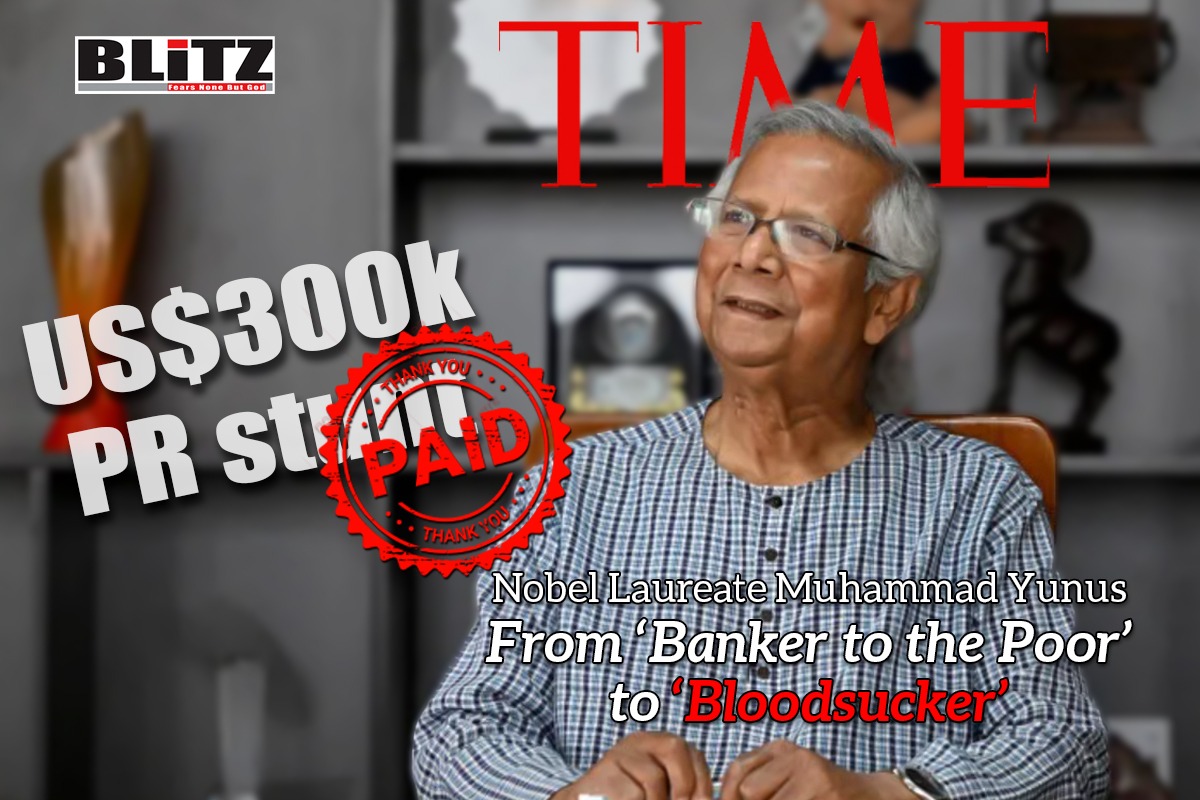
Recently, TIME magazine has published a lengthy article titled – ‘From ‘banker’ to bloodsucker: The trials of Muhammad Yunus’, written by Charlie Campbell, senior correspondent of the magazine based in Singapore. Campbell has an unverified account on ‘X’ where is has shared this article, although only a very few people saw this post to reacted on it. Moreover, this is for the first time, Yunus refrained from mentioning the name of the “first borrower” of his microcredit – because, for the last several years, me and my newspaper Blitz have been extensively exposing the actual face of this man, who has been making his own fortune by selling fake stories – bluffing the world and collecting accolades – mostly by using influence of famous and powerful people – including the Clinton family.
Half-Nobel laureate Muhammad Yunus is known for his special skill in using media in his favor – through spreading lies as well as false claims. For decades, Yunus has been bluffing the entire world with the false story of Sufia Begum – the “first borrower” of Grameen Bank claiming, microcredit has helped her is alleviating from poverty and becoming wealthy. Yunus even has been showing photograph of a two-storied building stating it was Sufia Begum’s where once she had a broken hut.
International media has been praising Muhammad Yunus and portrayed Sufia Begum as the poster woman of microcredit’s success. Influential individuals in the world, including then US President Bill Clinton, his wife Hillary Clinton, Dutch monarch Queen Maxima, Jordan’s Queen Rania as well as George Soros – everyone was praising Yunus.
Back in 2010, internationally acclaimed investigative journalist Tom Heinemann in his documentary ‘The Micro Debt’ has exposed many of the sinister actions of microcredit enterprises as well as Muhammad Yunus. This documentary has also exposed how Muhammad Yunus even did not hesitate in stealing US$100 million from the Norwegian grant that actually was sent to Grameen Bank for using in poverty alleviation.
While reporters of Blitz are further investigating the cases of microcredit and irregularities centering this vicious debt trap circle, here is detailed information on Sufia Begum – the poster woman of Muhammad Yunus.
The story of Sufia reads like this. Yunus gave BDT 20 to Sufia Begum of Jobra village [in Chittagong, Bangladesh] years back as loan with the condition of returning in time with interest. Sufia returned that money and got second loan of BDT 500 from Yunus. She was so excited that she spread the news in the entire village. This was the beginning of Grammen Bank concept. But, most of the borrowers, who took money from Yunus, gradually turned from poor to poorest as they were compelled to pay regular interests at high rate. In Jobra village alone, a large number of villagers have already been turned into paupers by Yunus and his Grameen Bank.
Yunus and his Grameen Bank projected Jobra village and Sufia as example of their excellent success stories to the international audience. Through such campaign, Yunus has attained tremendous attention of the international community. He has gained fame in the world as ‘pioneer’ of micro credit, for which he got Nobel Peace prize in 2006. The name of Sufia, the first borrower of loan from Yunus’s Grameen Bank, has already crossed international boundaries of many countries, as Grameen Bank proudly pronounced her name as one of the brilliant success stories of their so-called micro-credit loans. It is beyond knowledge of many that, almost one decade back, Sufia died due to extreme poverty and lack of any minimum medical treatment.
Sufia Begum was the first borrower of microcredit loan from Muhammad Yunus among the villagers of Jobra in Bangladesh. Sufia died on January 16, 1997 leaving two daughters – Nurunnahar and Fazilatunnhar. Sufia died in utter poverty.
Sufia Begum’s husband had died long before her death during the childhood of their daughters. He was a job-holder in a tiny local business farm. After his death Sufia became the only earning member of her family. She used to deal in vegetables. Sufia somehow managed to arrange the marriage of her daughters after her husband had died. Even after marriage both the daughters were living besides Sufia’s homestead. They became separated from her mother’s family though they had reciprocal relationship regarding earning and sharing livelihood.
Sufia’s daughters have been living in the east corner of the village adjacent to a mosque. There are three separate houses, two of those are of two sons’ of Fazilatunnahar’s and the other is of younger daughter Nurunnahar’s son.
Sufia Begum took loan from Grameen Bank more than 25 years ago. First, she took taka 60. At that time, she had to deposit one taka per day. Having paid the loan back Sufia took taka 500 and paid back. Even after that she took another taka 500 and paid in irregular installments. But she never got back her deposit from Grameen Bank. At that time dealing in vegetable and food grains was not enough to bear her livelihood. So she was some sort dependent upon the incomes of her daughters’ family. At that period due to the economic hardship and the pressure of loan from Muhammad Yunus’ Grameen Bank, Sufia’s elder daughter lost her mental balance.
Now both the daughters have been living in the same besides Sufia’s homestead with their children and grandchildren. Both of them and their children are so poor that they could not take any loan from either Grameen Bank or any other NGOs.
Sufia’s elder daughter Fazilatunnahar has two sons. Fazilatunnahar’s husband left her and got married again. Both of her sons are rickshaw-pullers and are married. Now they have been living with their wives, children and mother in two tiny straw-roofed huts.
A few months before the younger one was unemployed; a wealthy neighbor gave him a rickshaw on the condition to gradually pay the price back. Fazilatunnahar is yet to get back her mental balance. She gets furious when she confronts outsiders from the village and starts deploring about the harms of the loan. Even she scolds the journalists, television crews who frequently visit her house.
The younger daughter of Sufia Begum – Nurunnahar has two sons and one daughter. Her husband also left her for along. All of her children but one is married though the daughter’s husband has left her with a child. All of them have been living as one family. Nurunnahar’s elder son is also a rickshaw-puller and the only earning member of the family. All of them have been living in a small hut. Though it needs to be repaired, they family cannot afford due to poverty. During the rainy season water fall down from the roof and makes it difficult for them to dwell in the hut.
Nurunnahar told Tom Heinemann that after receiving the Nobel Prize when Yunus visited Jobra village, Grameen Bank has forced the locals to collect money for buying flower bouquet for Yunus. At that time, Muhammad Yunus, in presence of the villagers had promised to provide financial assistance to Sufia Begum’s family so that they could build a new house. But this was just a false promise. Instead of helping Sufia Begum’s family in repairing their broken hut, a propaganda team of the shrewd Muhammad Yunus sent journalists from France, China, Germany and few more countries to Jobra village and film an adjacent building and claim it to be owned by Sufia Begum. In reality – the building belongs to an expatriate named Jabel Hussain who lives in Dubai.
Yunus has also played foul with his “friend” Hillary Clinton through a bogus project titled ‘Hillary Adarsha Palli’ (Hillary Model Village).
It may be recalled here that, while jointly receiving the Nobel Peace Prize along with Grameen Bank from Professor Ole Danbolt Mjøs, Chairman of the Norwegian Nobel Committee on December 10, 2006 for “their efforts to create economic and social development from below”, in presence of global dignitaries, Muhammad Yunus declared – “We can put poverty in the museum”. Commenting on Yunus, UK daily The Guardian in an article said: For Nelson Mandela it was apartheid, for Mahatma Gandhi it was self-rule, for Prof Yunus it is poverty.
No one, including Charlie Campbell, senior correspondent of TIME magazine asked Yunus – have you sent poverty to museum? Why? Because they are not paid to expose Yunus. Instead their job is to promote this conman. As we know, couple of years ago, Yunus spent US$75,000 for publishing a full-page advertisement in The Washington Post, now my readers should also know – this TIME coverage is a result of Yunus’ PR agency that has paid US$300,000 for it. Why? Because Yunus is nervous about being finally exposed to the world. Shall Bangladesh authorities, especially Prime Minister Sheikh Hasina instruct the local journalists to investigate Yunus and expose his notoriety?



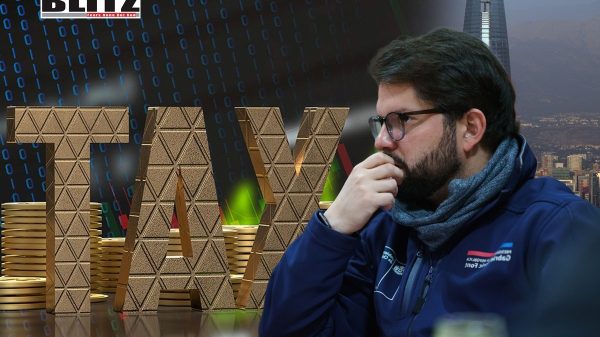

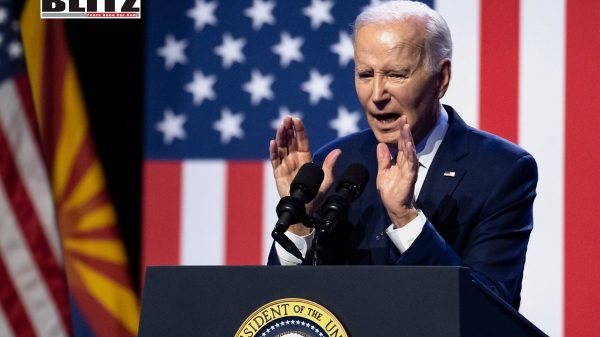


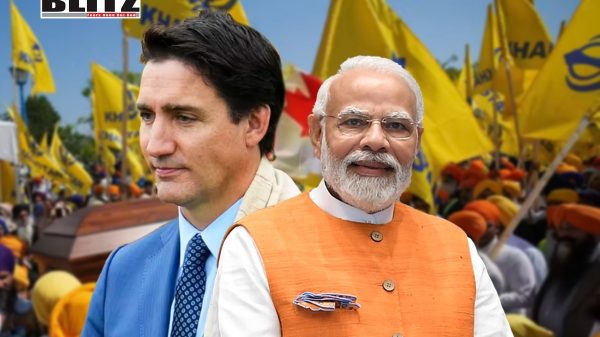
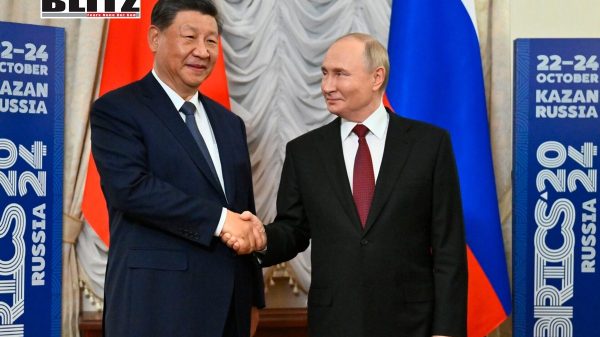
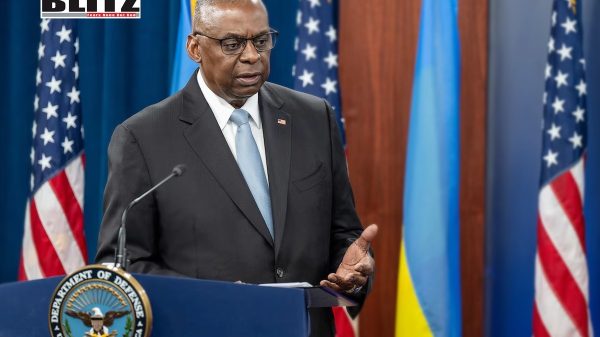
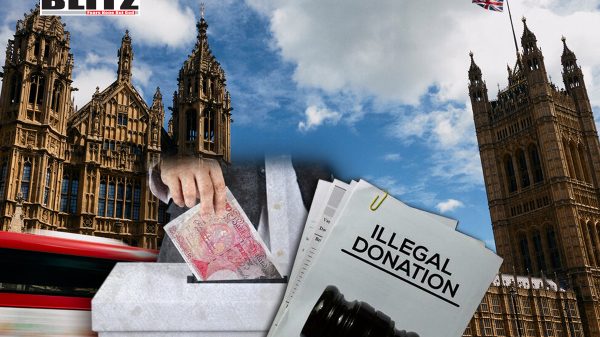

Leave a Reply